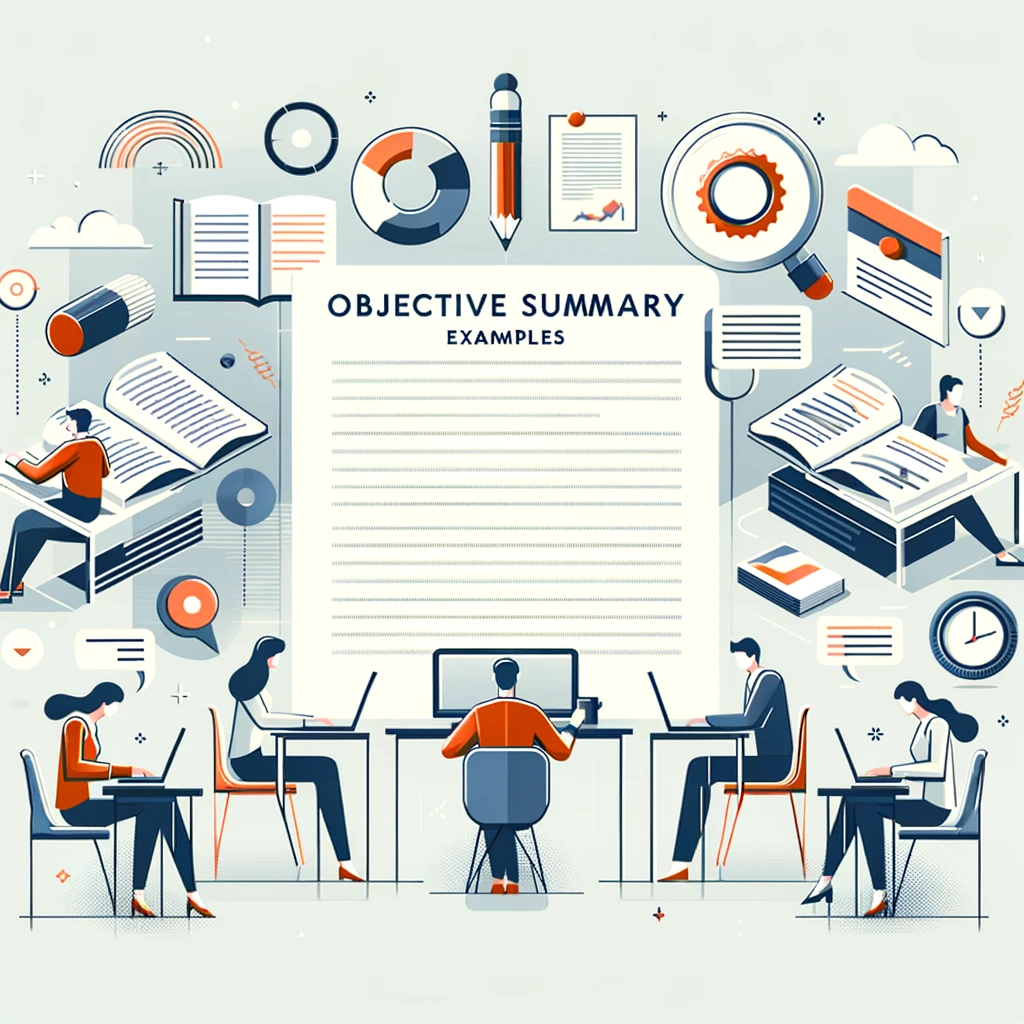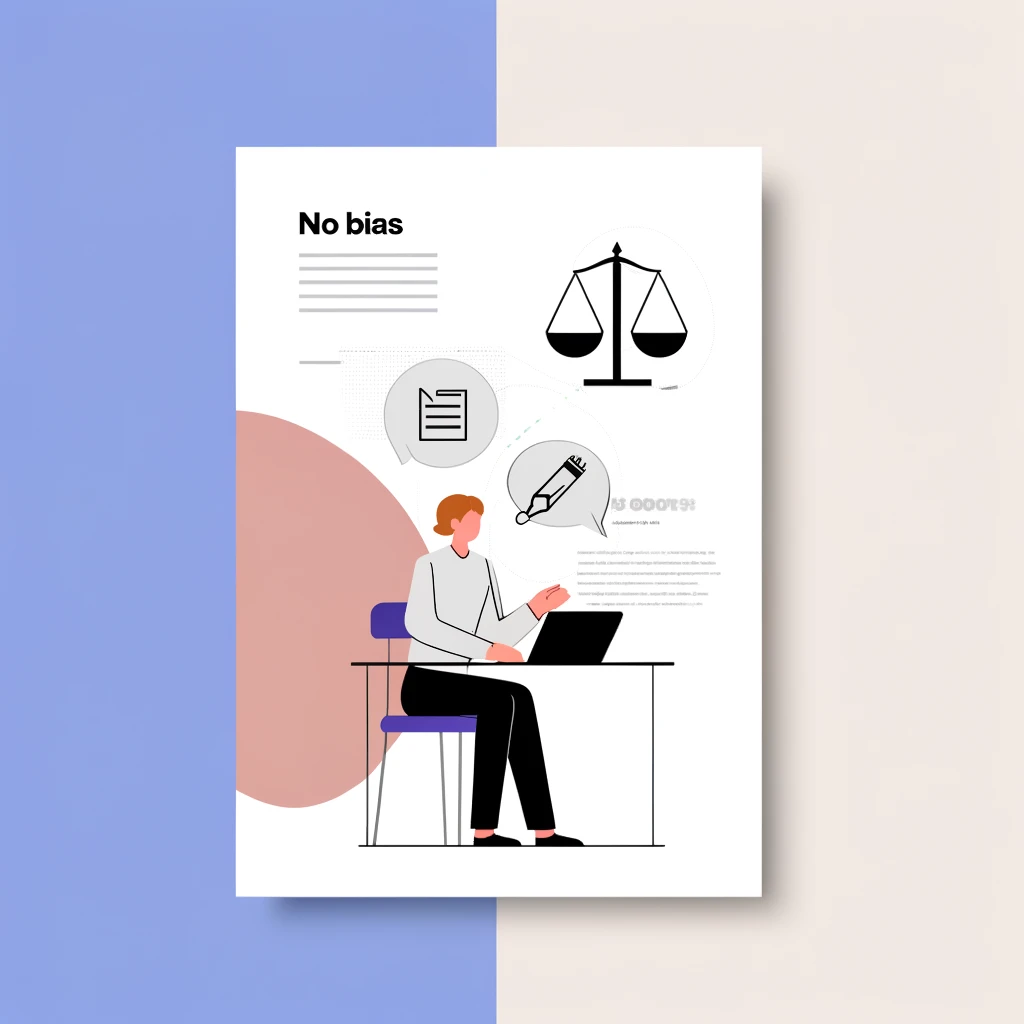- An objective summary is devoid of any opinions or judgments about something written.
- Knowing how to write an objective summary helps read and identify the most vital information in the text.
- An advanced AI Summary Generating Assistant can quickly overview your online discussions.
Need help with loads of complex information? Master the art of crafting an objective summary. An effectively written summary will give a clear and concise overview so you can easily understand and remember the essential content.
This guide answers the question, “What is an objective summary?” and shows how to write it to avoid overwhelming details. Moreover, it uncovers practical examples, common mistakes, and an AI Assistant that generates summaries for productive results.
Objectivity: What Is an Objective Summary?

According to Merriam-Webster, objectiveness is the lack of favoritism toward one side or another. American Psychological Association defines objectivity as “the tendency to base judgments and interpretations on external data rather than on subjective factors, such as personal feelings, beliefs, and experiences.”
What’s the objective summary definition? This type of summary briefly describes the central thesis and supporting points of a press piece, video, or document.
How? It efficiently communicates only the most noteworthy and essential parts of a longer content without personal analysis, opinions, or irrelevant details.
The aim is to convey the most essential points of the original content without personal opinions, interpretations, or unnecessary details. It’s about sticking to the facts and clearly and accurately representing the original content.
As a result, an objective summary helps readers assess content and decide whether to investigate it further. For instance, you can write this type of summary to give a presentation, summarize a text or a meeting, or cite a piece from a report or a speech.
When to Write an Objective Summary?
You need an objective summary to quickly provide a clear, concise, and unbiased overview of a text. And such summaries are often required in academic settings for book reports, literature reviews, and research papers.
In professional settings, they’re helpful when summarizing articles, reports, meeting minutes, project updates, giving presentations, and citing references.
Why Are Objective Summaries Important?
According to famous anthropologist Gregory Bateson, objectivity is about “looking very carefully at what we choose to look at.” So why do you need an objective summary through “careful looking?” Because it provides:
- Clarity and Understanding: Clarifies complex information, making it accurate and more accessible for others to understand.
- Collaboration: Helps share efficient and to-the-point information in professional and academic settings.
- Information Recall: Reinforces understanding and memory retention by summarizing loads of information.
- Objectivity: Helps convey essential information without personal bias so the information conveyed won’t get distorted.
- Quick Description: Lets quickly describe the critical points of the content along with a few supporting ideas.
- Conciseness: Give the main points or the informative version of larger content through short statements without unnecessary details.
- Unbiasedness: Gives an overview of content that is free from bias and clear from personal feelings or interpretations.
- Communication: Mastering the art of writing objective summaries improves communication skills.
But that’s only part of the story. Today, when online meetings and discussions are part of our lives, it’s critical to leverage the information shared during these meetings. That’s where AI Note-Taking and Summarizing tools step in to help us create summaries quickly and effectively.
How to Write an Objective Summary? What Are the Three Parts of an Objective Summary?

What describes an objective summary? The three parts, Main Idea, Key Details, and Conclusion, describe your summary and help you write it. By building your summary around these parts, you can quickly jot down what’s essential in your own words. Moreover, these parts help you avoid repetitive or irrelevant information more easily.
Let’s break these down further.
- Main or Central Idea/Thesis Statement
The main idea is the central point of the content you’re summarizing. To get the main idea, read the original work and answer the question, “What is this about?” Mainly, focus on the purpose of the text or discussion, taking notes simultaneously.
Example:
Text: “Tom loves reading books about space. He reads a chapter from his favorite astronomy book every night before bed. His room is filled with posters of planets and stars. Tom dreams of becoming an astronaut one day.”
Main Idea: Tom is passionate about space and dreams of becoming an astronaut.
- Key Details
Key details are the supporting points of your objective summary. They elaborate on the main idea and provide context and depth but are limited to the most critical information. When writing down key details, avoid including minor or non-essential details information. Don’t forget about essential names.
Example:
Essential Details: books about space, posters of planets and stars, and becoming an astronaut one day.
- Conclusion
The conclusion reiterates the main idea or presents the implications of the information to wrap up your summary. When writing a conclusion, ensure the reader clearly understands the significance of the content.
Example:
Conclusion: Tom’s passion for space and his nightly reading habit reflect his dream of becoming an astronaut.
Objective Summary Examples

Here are a few examples to better understand objective summaries.
Example 1: Article Summary
Original Article: “Online meetings are here to stay. Imagine a world where technology gives us a superpower to be highly effective in online meetings. You’re just trying to get through a video call, but all anyone can hear is your neighbor moving alone and your kids watching TV in the same room. Even if another person is speaking loudly in the same room, with Krisp we can mute them all, even on the other end.
Objective Summary: “Online meetings are becoming permanent. Technologies like Krisp can enhance effectiveness by muting background noises, ensuring clearer communication.”
Example 2: What Is an Objective Summary Example of a Meeting?
Original Meeting Discussion: “Startup life is much more catered to those with a growth mindset. Every year in a startup is a career in an enterprise when you look at how much intellectual velocity is needed to succeed and how quickly things change. Often, those who leave enterprises to found startups have a hard time adjusting to the new paradigm, and on top of that, you’re more than likely to leave a lot of money on the table.”
Objective Summary: “Startup life demands a growth mindset and rapid adaptation. Changes and intellectual demands occur much faster than in enterprises, making it challenging for former enterprise employees and often resulting in financial sacrifices.”
Example 3: What’s an Objective Summary Example from a Book?
Original Book Excerpt: “Since Syunik’s mountains apical glaciation had two phases, it is natural that the existing moraines must have also emerged as the sum of those two phases of ice field activities.
It is also natural that today’s visible landscape formed after the second glacial phase. Consequently, it may be assumed that the covering of the petroglyphs results from this second phase of ice field activities.
However, if moraine rocks produced by the ice field of the second glacial phase have covered a given petroglyph, then that petroglyph must have existed before the second glacial phase. Therefore, we may represent the petroglyph covering process in the following approximate scenario.
At the end of the first phase of apical glaciation, the melting ice field sliding down the peaks 9 produces its moraine, in which one face of the included rocks, by friction, is smoothed and marked by shallow grooves. On the smoothed faces of these rocks, petroglyphs are engraved during the interglacial period (33-50 thousand years ago).”
Objective Summary: “The petroglyphs in Syunik’s mountains were covered by moraine rocks from the second phase of glaciation, indicating they were created between the first and second glacial phases, roughly 33-50 thousand years ago.”
How to Write an Effective Objective Summary with Krisp
Thanks to AI Meeting Assistant Krisp, you can say goodbye to manual summarizing, which consumes your valuable time. Krisp is a leader in real-time Voice AI and doesn’t bother users with lots of bells and whistles.
Designed with productivity in mind, Krisp crafts an objective summary by focusing only on what matters most. So, you can avoid spending time on note-taking, transcribing, or summarizing.
How can Krisp help create objective summaries?
- Automatically Records Your Online Discussions: Records with best-in-class audio clarity through the latest Voice AI technology.
- Eliminates Distractions: Cancels background noise, voice, and echo in real time to make your online meetings productive and effective.
- Automatically Provides Unlimited, Multilingual Meeting Transcriptions: Ensures unmatched 96% transcription accuracy so you can capture the gist of discussions without rewatching the entire recording.
- Effectively Takes Notes and Objectively Summarizes: Briefly jots down only the vital points of discussions to encourage effective communication and follow-up. Such effective note-taking enhances information recall and provides valuable insights concisely and effectively.
- Lets You Include Your Objective Summary in Templates: Streamlines the documentation process and ensures all relevant details are conveyed.
- Enables You to Revisit Your Summary: You can review your AI-generated objective summaries whenever you wish to edit and work on action items.
- Lets You Share Your Summary: You can easily share your summary with others to improve collaboration.
Krisp is available for Windows, Mac, Linux, iOS, and Android. Moreover, you can easily integrate this AI Meeting Assistant with any virtual conferencing platform or app, such as Zoom and Google Meet. No plugins are required.
Common Mistakes to Avoid

We learn from mistakes. Learning common mistakes helps us clarify our priorities and get things right. So, what are common objective summary mistakes to avoid?
- Not Reading or Listening Carefully: Thoroughly read the text or listen to the video, simultaneously taking notes on the main points and key details.
- Not Focusing on the Main Idea: Determine the central thesis of the content by asking yourself what the primary purpose is.
- Not Highlighting Key Details: Select the most critical supporting points that explain or support the central thesis.
- Including Personal Opinions: Be neutral. Free your objective summary from personal biases or interpretations.
- Overwhelming with Details: Include only the most vital points and exclude insignificant, minor details.
- Not Using Your Words: Don’t copy phrases from the original content to avoid plagiarism. Paraphrase the text through your understanding.
- Being Vague and Redundant: Include enough detail to convey the main idea to avoid being overly general or unclear.
- Not Reading or Watching Carefully: Thoroughly read the document or watch the video to understand the gist.
- Not Taking Notes: Take notes to support the central thesis. Note-taking also helps identify and record the main ideas of the original text, organize information, and facilitate understanding and information retention.
- Not Being Brief: Combine your notes into a brief and cohesive description, capturing only the essence of the original content.
- Not Keeping the Structure Hierarchically Organized: Use a logical structure for your summary by prioritizing the most critical information. Start with the main idea, then add key or supporting details and a conclusion.
- Not Reviewing and Editing: Revise your summary to ensure it’s accurate, clear, concise, and free of errors and personal interpretations.
Final Word
Objective summary writing helps focus on the main ideas and key details without personal bias or interpretations. As a result, you can convey complex information clearly and concisely while being neutral.
Mastering the skill of writing objective summaries is invaluable in academic and professional contexts. So, learn common mistakes for better results.
Importantly, using an advanced AI Note Taker and Summarizer, you can craft more effective objective summaries for added productivity.
Frequently Asked Questions
Here is the objective summary of the text: “Maria spends her free time gardening, growing flowers and vegetables in her backyard, finding peace and enjoyment in tending to her plants each morning.”





